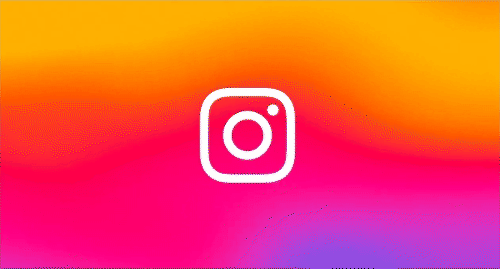Seeking inspiration for your social media marketing efforts in 2023?
Over the first few weeks of the year, we’re publishing a series of tips and notes on how to maximize your online efforts, including pointers on new tools like ChatGPT and DALL-E, and how these evolving apps can assist in your content planning process.
We’ve already covered the following elements:
So, with the first two major platforms out of the way, we move onto the next big app – Instagram.
Which has been having something of an identity crisis – here are some key tips to help you maximize your Instagram presence in 2023.
Evolving vision
As noted, Instagram’s been going through a mini-metamorphosis of late, as it works to keep up with the latest trends, and remain a key app for younger audiences.
Which essentially means keeping up with TikTok, which has seen IG adding more random posts into your main feed, putting more focus on short-form video clips in explore, and leaning into newer engagement behaviors, like people sharing posts in DMs and Stories, instead of to the main feed.
With this in mind, Instagram recently outlined its three key areas of focus for 2023.
Those are:
- Inspire people to be creative
- Help people discover things they love
- Spark connections between people
From a marketing perspective, a key consideration here is enhanced discovery, in showing people more content from people and pages that they don’t follow.
This, as noted, has become a key shift in approach for IG.
Up till recently, Meta had been able to dominate the social media landscape due to its social graph – i.e. everybody you know is on Facebook and IG. Because of the scale of its apps, Meta has a big connective advantage, and it’s been able to use that to replicate features from other apps, for example, in order to keep people on its platforms instead.
But TikTok has changed the paradigm around social media, putting less focus on the ‘social’ aspect, and more on entertainment. The advantage in this respect is that TikTok is able to source the content that it shows in user feeds from a much broader pool of uploaded posts, not just the users and pages that you’re connected to. And because its algorithm is so good at showing you more of what you like, it keeps users locked into a steady-flowing feed of entertainment – whether you’re commenting, liking, sharing, or not.
So now, every other app is playing catch-up, and Instagram is making arguably the biggest push, as it seeks to stop users moving to TikTok instead.
From a brand perspective, that could give you more opportunity to get your content on front of more people that don’t follow your brand page – so long as you create engaging content.
Building brand presence
The first key element to consider in building a presence on IG is consistency, and establishing a recognizable and relatable presence with every post.
On this, Instagram offers these three guide notes:
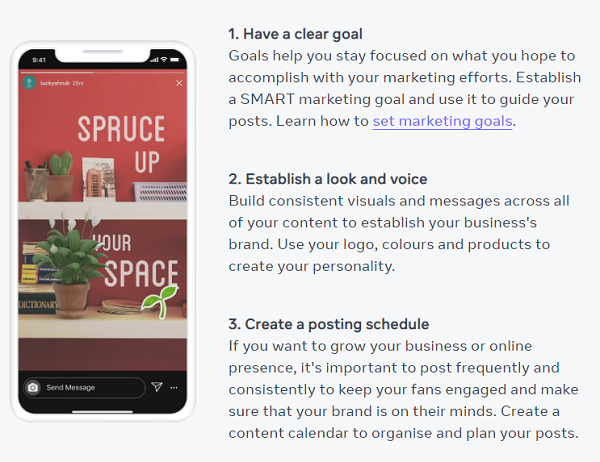
The most specific posting note here is to develop a style that remains consistent throughout your posts, based on colors used, settings, stickers, emoji etc.
Establish what you want your brand look on Instagram to be, which will then help you build a more unique and definitive brand presence in the app.
In terms of product shots, you should look to get a mini-studio, of sorts, together where you can take photos on a solid background with proper lighting and staging. This doesn’t have to be an expensive set-up necessarily – check out these tips from Canva.
Short-form video
Another big focus is short-form video via Reels, and that could well be the key to maximizing your IG performance. If you can come up with great Reels content, your chances of getting more reach on IG rise exponentially – and really, that should be a major consideration if you’re looking for ways to boost your Instagram performance this year.
So how do you come up with great Reels ideas?
Well, really, you should probably look at TikTok.
Using TikTok’s ‘Top Ads’ showcase, which enables you to search for the best-performing ads in the app, by topic or vertical, you can get some valuable notes of inspiration, based on how other brands in your niche are seeing success.
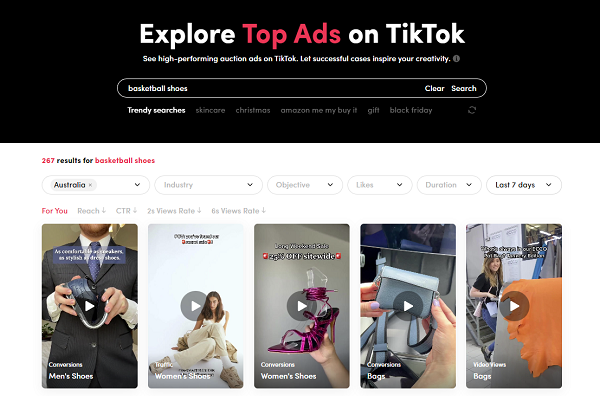
On Instagram specifically, you can also use IG’s search functionality to uncover the best-performing posts by topic, which is another way to research content ideas.
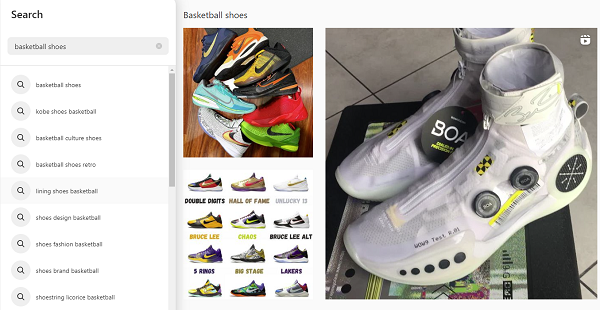
You can see, using IG’s newly implemented side-search bar on the web, how the top related results are displayed once you enter a query, which can help to guide your research process. Scan through the listings for relevant Reels, and you can get a better idea of topical ideas for your content. When you search on mobile, you can also scan through all the top Reels related to a topic by tapping into one of the Reels clips highlighted in the search results, then scrolling through from there.
In terms of specific creation notes, Instagram says that businesses should highlight their brand within the first few seconds of their Reels clips.
Also, note the ‘safe zones’ when recording – i.e. where your video won’t be disrupted by UI elements.
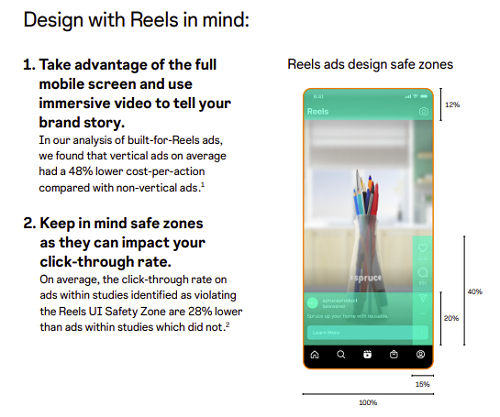
Note too that videos up to 60 seconds long will now play in full in IG Stories and will not be split into 15-second segments.
Finally, if you’re really stuck for ideas, you can use other Reels as templates, which can provide more guidance in your creation process, based on popular Reels formats. Meta also has a tool that can convert still images to video assets, so you don’t even need video to get started, if you’re finding this challenging.
Look, creating engaging short-form content isn’t easy, as it’s all about the entertainment factor, and hooking people into your content. If you fail at that, they’ll scroll by, and being good at consistently creating Reels is no small feat. But there are options and tools available to help, which could help to improve your process.
Captions
In terms of captions, Instagram offers these caption tips:
- Lead with the most important information
- Use a consistent and personal tone
- Keep copy short and to the point
- Encourage action with simple, direct text.
So, essentially concise, to the point, and encouraging action (for brand posts), which means including a CTA at the end, inviting users to take the next step. Your captions don’t have to be epic tales – Instagram’s caption length might be 2,200 characters, but that doesn’t mean that you have to use them.
Try to be creative and concise, and drive users to the actions that you want them to take – i.e. viewing your content and taking action based on your visuals.
Hashtags
Hashtags are also important, and you can also search more specifically for related tags in the mobile app, to assist in your discovery process.
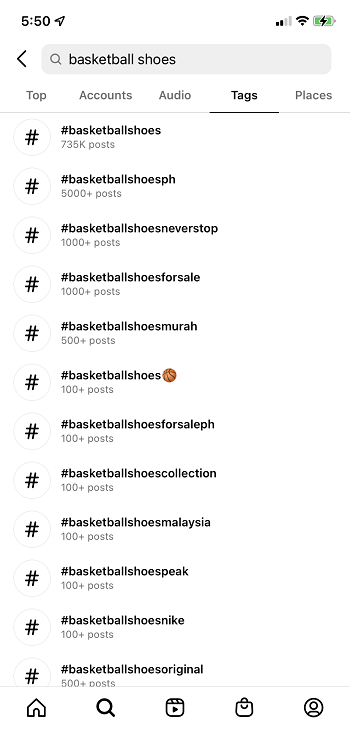
Hashtags may not be as critical as they once were in the app, especially as Instagram continues to improve its AI-based recommendations, based on what you watch and engage with. But they do still play a significant role in discovery, and highlighting relevant content to users.
But you need to research them – so many times I’ve seen brands using hashtags that, in general, have no relation to their business.
Tools like Hashtagify can help, as well as Google Keyword Planner, which will highlight the most commonly searched terms, while scanning through related tags on IG itself will provide more guidance on what’s popular, and what’s relevant for your products (note the usage counts on the hashtags in the screenshot above).
Note all of the related tags, rank them by usage (Hashtagify provides data on tag popularity), and you’ll eventually be able to whittle down your list to the most relevant, targeted set of tags for your posts.
In terms of how many hashtags you should add to each update, Instagram recommends adding 3 to 5 highly relevant hashtags to reach the right communities, though some research has shown that adding up to 30 can have significant reach and engagement benefits. There’s no definitive answer, but you want to ensure that you hone in on the right users and trends, so choosing the most relevant tags is important. But if you have a collection of 30 relevant tags, that can also drive results.
Experiment, analyze, and optimize as you see fit.
Some other key posting notes to keep in mind:
- Instagram tries to recommend content which is similar to the accounts that people have chosen to follow, so it may be worth conducting more research into what other brands in your industry, particularly those that are doing well on IG, are posting, in order to better align with the specific elements that could then see your content highlighted to your target consumers
- ‘Freshness’ is important within Instagram’s algorithmic approach, which means that you need to be posting regularly to ensure that you’re maximizing your opportunities in this respect ‘Regularly’ in this context is not specific, but you should aim to be posting at least a few times a week initially, in order to build a presence, and measure audience response.
In terms of when to post, according to data from Sprout Social, the current best times to post on IG are Mondays at 11 am, Tuesdays and Wednesdays between 10am and 2pm, and Thursdays and Fridays between 10am and 12pm.
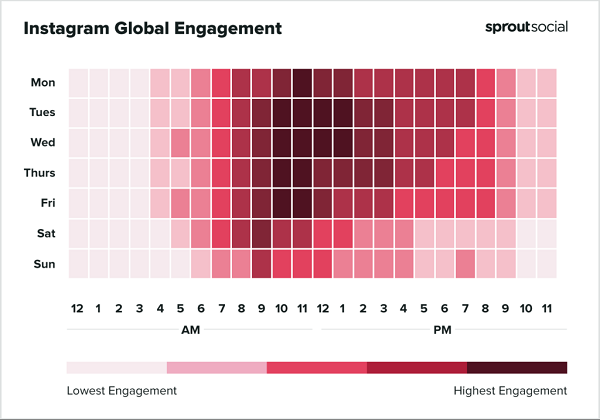
As you can see in the chart above, Sunday, according to Sprout’s data, is the worst day to post in the app. But this is all relative, and there are no universal ‘best times’ as such, it’s all based on your individual audience and their behaviors in the app.
Which, really, is true for all aspects – while these are good guide notes and tips, the real indicator of your success in the app will be your audience, and how they engage and respond to your IG posts.
Use these notes as a start point, measure your audience response, then double down on the elements that are generating results.
It takes time, and research to maximize your Instagram performance, but taking notes from the right places, and iterating on your results, will help you get more from the app.

